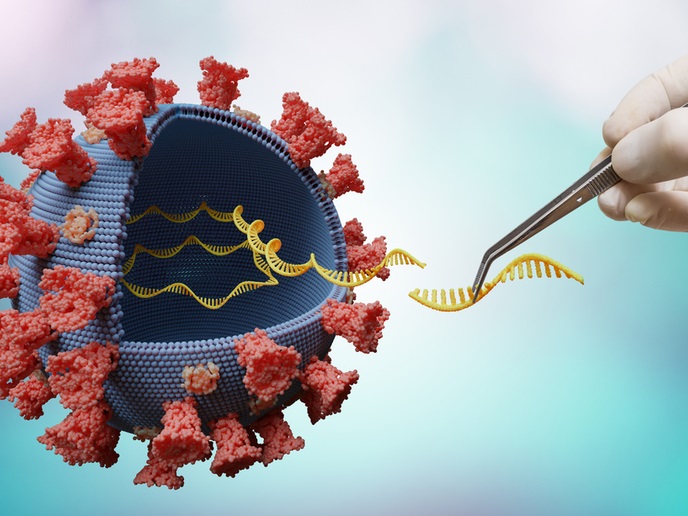Insight into viral RNA modifications holds the clue to antivirals design
Modifications on the bases of RNA molecules is an evolutionary conserved phenomenon observed in both eukaryotic and prokaryotic cells, suggesting they must carry out an important function. The post transcriptional RNA modification N6 methyladenosine(opens in new window) (m6A) is the most abundant modification in eukaryotic cells and accelerates mRNA metabolism and translation. It acts as a guiding signal detected by specific ‘reader’ proteins in the cytoplasm to direct different RNAs down distinct biological processes.
Mapping m6A modifications on viral RNA
The presence of m6A modifications on viral RNAs has been known for over 30 years, but lack of technology had prohibited its further investigation. The IAV-m6A project aimed to map the m6A modifications on the genome of Influenza A virus, IAV(opens in new window), unveiling at the same time its functional significance. This research was undertaken with the support of the Marie Skłodowska-Curie (MSC) programme. “The goal of the study was to decipher the role of m6A modifications on viral replication and identify how loss of these modifications affects viral pathogenesis,” explains David Courtney, MSC research fellow. Using an antibody-based method, Courtney identified the location of these m6A modifications on viral RNA, and then mutated the IAV genome to prevent m6A addition at these sites. Subsequent in vitro and in vivo characterisation of these mutant viruses confirmed that the m6A modifications favour IAV replication. Using mass spectrometry, the fellow studied additional RNA modifications such as 5-methylcytosine (m5C) and, alongside m6A, found them to be enriched on RNA virus genomes when compared to cellular mRNAs. “This significant enrichment of various modifications on the genomes of RNA viruses, including influenza A and HIV-1, was the most important finding of the project and probably reflects positive viral evolution,” notes Courtney. Importantly these modifications proved to be advantageous to the viral replication cycle and protein production. IAV replicated much slower in cells lacking METTL3(opens in new window), the key protein that deposits m6A modifications on RNA. These cells also produced less IAV upon infection, underscoring the role of m6A in IAV RNA regulation. This result was corroborated by experiments in cells overexpressing the proteins YTHDF1 and YTHDF2 that detect m6A modifications, where an increase in IAV RNA and protein levels was evident.
Future prospects
Although the IAV-m6A project undertook fundamental viral research with no direct clinical outcome, the research provided knowledge on virus evolution and the viral life cycle has translational potential. The identification of key proteins or modifications implicated in virus replication can lead to the development of novel small molecule antivirals that can slow down viral growth. Moreover, project findings can help increase IAV protein production, an essential step in the vaccine production pipeline to meet the demand for increased vaccine doses. David Courtney has been awarded an ERC Starting Grant which will help him set up his own research group at Queen’s University Belfast, in the United Kingdom. The aim of the group will be to explore further how a wide range of RNA modifications are used by IAV during its replication cycle. Additional mechanisms of post transcriptional regulation of IAV RNA will also be investigated.







